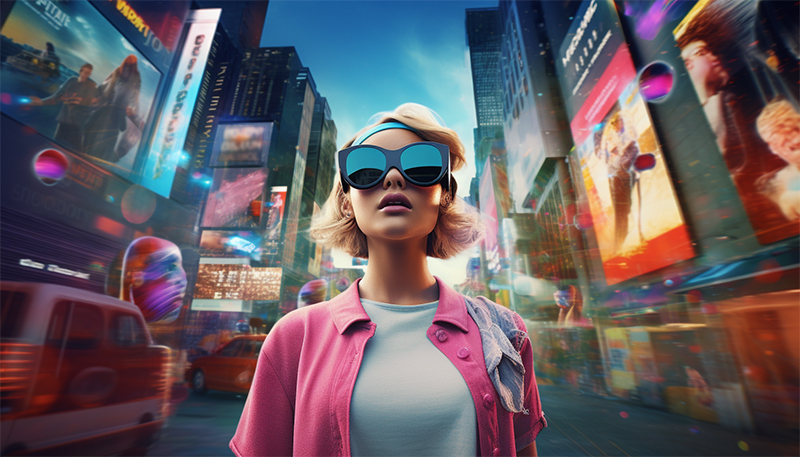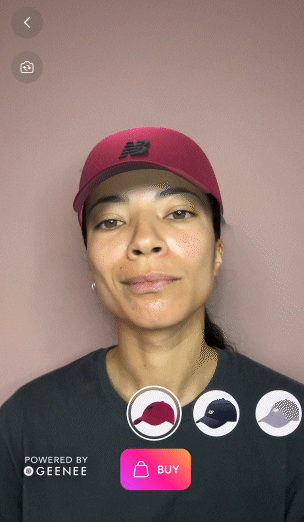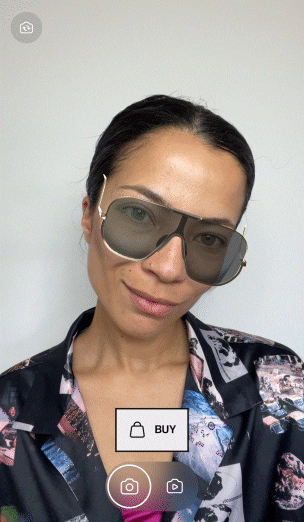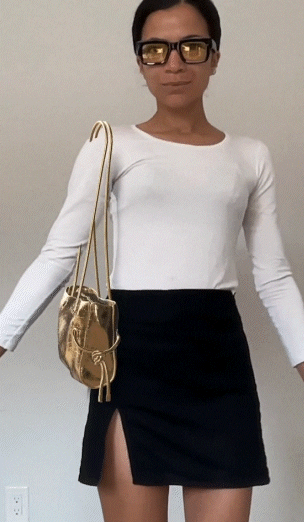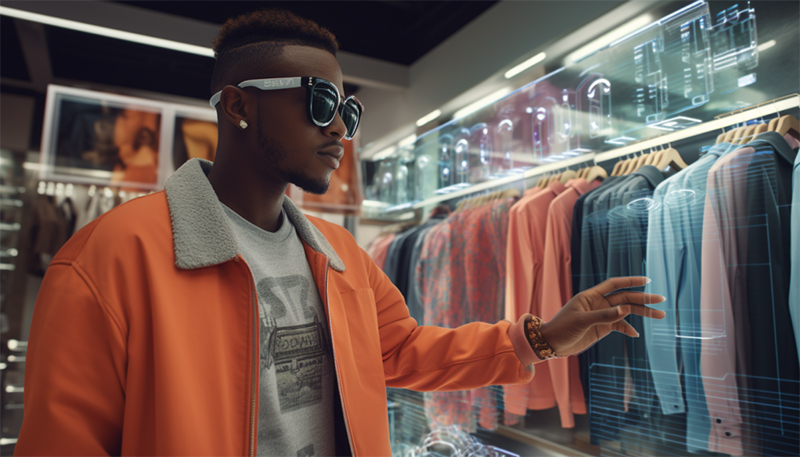In the world of marketing, content is king, but as the mediums for consuming content constantly evolve, and the platforms for delivering are constantly changing, so too must the approaches companies take to deliver their message to the relevant audiences. This is where XR technology comes in, as it is paving the way for innovative and immersive brand experiences. From virtual try-ons to gamified augmented reality (AR) social filters, XR is transforming how brands engage with their audiences.
Throughout this blog series, we'll look at several XR-enhanced approaches that are redefining the branding landscape and user experience. In this post, we'll start with XR-powered virtual try-on and try before you buy solutions.
What is virtual try-on and try before you buy?
Virtual try-on is revolutionizing the fashion industry by allowing customers to virtually wear products before purchasing. Similarly, AR-powered try before you buy solutions are changing the face of the furniture and home improvement industry by enabling shoppers to see how large items will fit in their existing spaces, as well as allowing them to visualize entire home decor adjustments such as new wall paint colors, all through a mobile device.
Brands such as Ray-Ban, Nike, IKEA, Burberry, Walmart, Amazon, John Lewis, and dozens more are already leveraging augmented reality technology to enhance the online shopping experience for customers.
Virtual try-on solutions can range from head and face worn accessories, to handbags, coats, shoes, watches, and more. Image source: Geenee.ar
How does it work?
Utilizing facial, hand, and body tracking, virtual try-on provides a realistic view of how products will look on a shopper. Customers can access these experiences through smartphones or webcams, creating a bridge between online and in-store shopping.
In the case of try before you buy, spatial tracking technology such as LiDAR scanners on some smartphones allows users to point their phone at a space in front of them. The software on their phone is then able to detect the physical sizes and distances of a room. This information can of course be used to place 3D models of furniture items into the setting virtually, in order to help shoppers more confidently decide on their purchase.
WebAR platforms such as 8th Wall feature hand tracking functionality, which allows developers to create experiences that track a user's hand, or other body parts, to which they can anchor various items of clothing or accessories for virtual try-on experiences. Video source: 8th Wall / YouTube
How to implement AR virtual try-on and try before you buy
Virtual try-on solutions can be delivered through various channels, each offering unique benefits. One of the most common forms of delivery though is through WebAR experiences. Platforms such as Niantic’s 8th Wall, Zappar and Geenee all provide brand developers with the tools necessary to create WebAR experiences and publish them so that they can be viewed on a smartphone.
Other delivery channels can include branded app experiences, which involve the creation of a dedicated app that can sometimes allow for a more personalized and immersive experience. There are also solutions such as AR mirrors, which allow users to try on various items of clothing simply by standing in front of them. AR mirrors function like a traditional mirror, but enhance the reflection with additional augmented reality content (we'll touch more on AR mirrors in next week's post though).
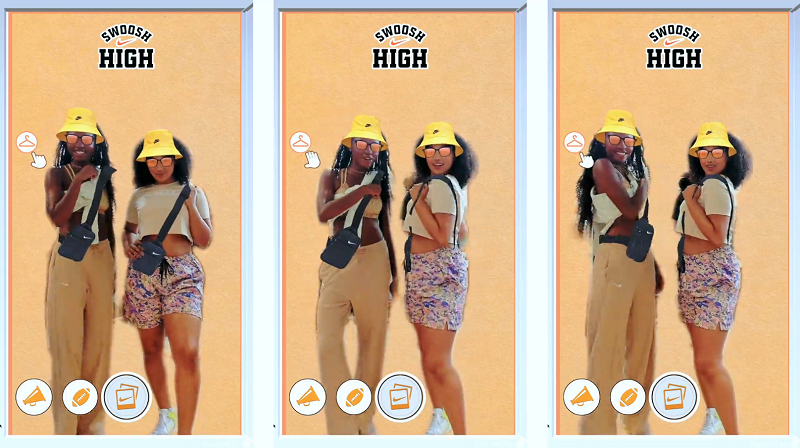
Of course, let’s not forget social media platforms, such as Snapchat, TikTok and Instagram, which also present brands with an extraordinary channel through which to deliver campaigns, as they allow for the creation of branded filters and lenses. Each of these platforms have greatly expanded the types of filter experiences that are possible in recent years, and today it seems that the only limitation is the human imagination.
From filters that showcase makeup styles, to sunglasses, watches, earrings, clothing, footwear, and everything else in between, social platforms for virtual try-on are an incredible way to reach consumers where they already are. We’ll touch on this more below/later in this blog series.
Snap's AR tools have enabled several fashion brands to build Augmented Reality retail experiences over the years.
Additional value of AR try-on experiences to brands and consumers?
Virtual try-on and try before you buy solutions offer numerous benefits to both brands and consumers. One such benefit is that they can actually help to reduce the number of returns, as these sorts of AR experiences give shoppers the freedom to try out items from the comfort of their own home, thus empowering them to make more informed decisions during the buying process.
According to a recent study from Alter Agents that was commissioned by Snap Inc. and Publicis Media, AR offers "a multitude of benefits to shoppers that, in turn, drive future AR usage. These benefits include greater pre-purchase confidence, which helps shoppers have a streamlined, entertaining shopping experience, reducing the likelihood of returns." As a result, AR is a powerful tool to help reduce customer uncertainty, meaning shoppers are ultimately less likely to return items.
A direct impact of reduced returns also means improved sustainability, and in a world where consumers are becoming more conscious of responsible consumption, augmented reality is increasingly being considered as an essential tool for sustainable online shopping.
Overall, AR is an excellent tool for brands as it helps to bridge the gap between online and in-store shopping. Virtual try-on experiences can be created to replicate the in-store experience online, offering the best of both worlds to consumers and ultimately appealing to a wider audience.
To learn more about branded experiences that utilize the power of augmented and virtual reality, make sure you check in on the AWE Blog every week, where we'll continue to post more insights and use cases within this series. Plus, with AWE EU on the horizon, now is the perfect opportunity to take advantage of our Early Bird pricing before it expires.
Make sure you grab your tickets and ensure that you are part of this year's leading European XR event and gathering, where you'll be able to talk first-hand with some of the global brands already employing the use of XR across their campaigns, as well as the major platforms that are helping brands facilitate their AR and VR advertising efforts.
